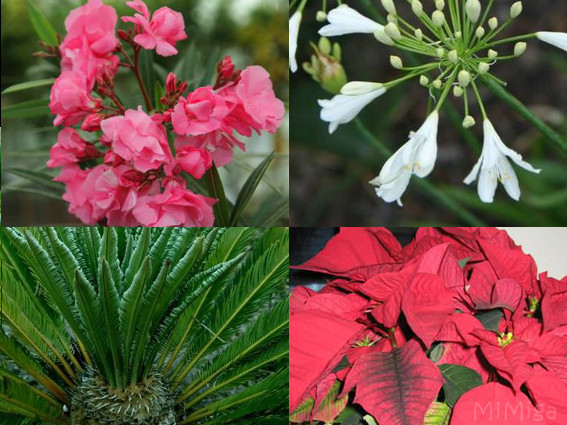
CATS AND THE 'GREEN'
Although cats are actually obligated carnivores, we can find them often - especially during shedding periods - nibbling at greens. They do so in order to get rid of the ingested hairs, which are vomited as hairballs (or beozars) or evacuated with the feces.
NON-TOXIC DOES NOS MEAN INOCUOUS
The topic cats and plants is very complex because potentially almost any plant can be bad for our cats ... it depends on much more factors than appearing on one list or the other ... (degree of toxicity, specific species toxicity, ingested amount, cat condition, treatment of the plant ...) - so you have to be very careful with the listings of toxic / non-toxic plants on the Internet.
To illustrate that it is not an easy or trivial subject, there are 2 books of 116 pages each (in German) about cats and plants and plants for balconies in cat houses (Katzenpflanzen and Katzenbalkon by Sabine Ruthenfranz, available on Amazon)
As Paracelsus said already in the 16th century: 'Everything is poison, nothing is without poison. Only the dose makes the poison.'
And be aware! That a plant is classified as non-toxic only refers to occasional nibbling, not that it is edible.
That's why it is very important that our cats have their own 'green' pot, which we can easily prepare for them.
MANY PLANTS ARE TOXICAL FOR CATS
Unfortunately various - very common- plants - in our gardens and balconies, are poisonous to our cats. Some only cause slight discomfort, but others can seriously affect the health of our cat and even endanger their life.
Toxic are eg daffodils, tulips, geraniums, dieffenbachia, calla, amaryllis, azalea, cyclamen, some ferns, ivy, broom, oleander, ficus, laurel, potato, tomato.
The Veterinary University of Zürich (Institute for Pharmacology and Toxicology) has a specific website with a computerized information system* on medicines and poisons for veterinarians with an exhaustive DB of plants, listed by their botanical name and classified by their toxicity (non-toxic , slightly toxic (+), toxic +, strongly toxic ++, extremely toxic +++, species specific toxicity | | strong ++ | extreme +++, toxic in exceptional cases • | very toxic ••)
Indoor Plants | Ornamental Garden Plants | Crops
It's in German, but it is easy to search: By clicking on "Namen" (names) you can access a list of plants arranged alphabetically.
You can also search for toxins and plants directly in the search field.
(*) NOTE: The CliniTox system, designed for veterinarians, also offers detailed information on diagnostic and therapeutic measures in the event of poisoning of small animals and ruminants, pigs and horses. If necessary, pass the information on to your vet.
how to minimize risks
When I'm going to buy a new plant I always consult previously the lists or take them with me to the garden-center, and so I avoided, for example, to bring home a Ponytail Palm, which I fancy very much, but is poisonous for my furry housemates…
In addition, many plants - even those harmless to our cat - may have been treated with plant protection products (fungicides, pesticides and fertilizers) and / or polishing sprays, so it is advisable to shower them to eliminate possible harmful substances.
For this reason, it is also necessary to ensure that watering them does not leave water in the saucers of the flowerpots that can carry the remains of these products in the soil.
And if we want to fertilize our plants, there are fertilizers on the market which are non-toxic to animals. Very practical are eg the sticks that 'hide' in the ground and release the fertilizer little by little.
The same applies to cut flowers and bouquets. In this case we have to ensure that the cat does not reach the water in the vase.
Also, there are initially innocuous plants, such as the well-known airplane / ribbon or spider plant (Chlorophytum comosum) which are very beneficial for us because they filter the air. But precisely that can lead to intoxication of our cats if they chews the leaves.
With a little common sense and inventiveness we can enjoy both, flowers, plants and our cats without having to worry ... eg putting this beautiful bouquet in a showcase ... surely it even lasts much longer ... and our cats are safe.
Related Posts
